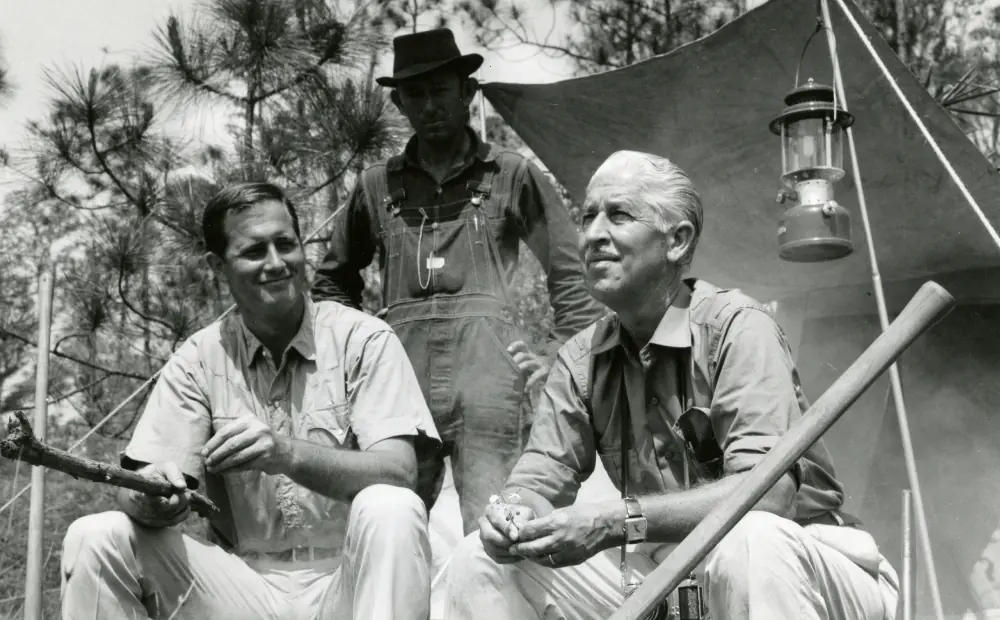0:02
Today we're visiting one of the most extraordinary animal habitats on Earth, the Turkey Point nuclear power plant in South Florida.
0:11
Nearly 1600 megawatts of power generation cooled by these saltwater canals.
0:18
This water moves through the facility to cool equipment and then return to the canals, warmer but otherwise unchanged.
0:26
The water and the cooling canal system never comes in contact with anything radioactive.
0:31
It is part of a closed loop system.
0:33
This 168 mile network right next door to the Florida Everglades also happens to be the ideal nesting place for American crocodiles.
0:44
They were in the surrounding coastal areas and then they moved in once we dugout the cooling canals.
0:48
We estimate that around 400 crocodiles utilize our site.
0:52
Biologist Michael Lorette is tasked with keeping careful watch over the crocodiles living around a nuclear plant.
0:59
It's a job not to be taken lightly.
1:01
Crocodile is the ultimate reptile.
1:03
Big, bad to the bone, big old teeth, smart, can communicate.
1:07
We haven't even scratched the surface of what we know about them.
1:11
The rare, secretive American crocodile needs specific conditions to thrive.
1:17
So Florida Power and Light, who operates this facility, has assembled a croc team dedicated to preserving this unexpected habitat.
1:27
To do that, every year they need to discover just how many new baby Crocs are out here.
1:35
Tonight, I've joined the croc team to find and capture crocodile hatchlings.
1:40
We'll head out into the system, get our croc team together, go collect as many hatches as we can to bring them back to the lab to process them.
1:47
After they've emerged from their eggs, the babies will call out to their mothers, who will open up the nest, pick up the hatchlings in her mouth, and bring them to the water.
1:57
To find these nests ourselves, we need to locate the paths that the crocodile mothers have cleared to and from the water's edge.
2:05
What's the advantage of going out to the collect them at night?
2:08
The reflection off our headlamp will show beady little red eyes from the water's edge.
2:14
We track into the bush to look for those tiny red eyes staring out from the darkness.
2:20
Time is of the essence.
2:21
So even though these hatchlings may only be 24 hours old, they can communicate with one another.
2:27
Once you grab one, they'll send out an alert call.
2:29
So it's really important that we act right away.
2:32
See that no red eyes.
2:35
It doesn't take long before Kate from Florida Power and Light spots our first hatchling.
2:40
Good job.
2:41
Oh, look.
2:43
OK, Good eye.
2:44
And soon we start spotting dozens of baby Crocs.
2:49
That one.
2:50
That one.
2:50
All right.
2:51
Yeah.
2:54
These are fast little creatures, and we're not going to find them all this evening.
2:58
The team will have to repeat this process several times to get an accurate count.
3:03
Although we've caught over 30 hatchlings tonight and Mike, didn't we have a record hatchling season last year.
3:09
We did.
3:09
Last year we had 565 hatchlings.
3:11
That's amazing.
3:12
So what are we thinking this year so far?
3:13
We have a great start with 107 and we're going to hope that that keeps going up.
3:18
The American crocodile was actually down listed from endangered to threatened in 2007, largely in part due to the work done here at Florida Power and Lights Turkey Point.
3:27
We can take these back to the lab, set them up for the night and process them tomorrow morning.












